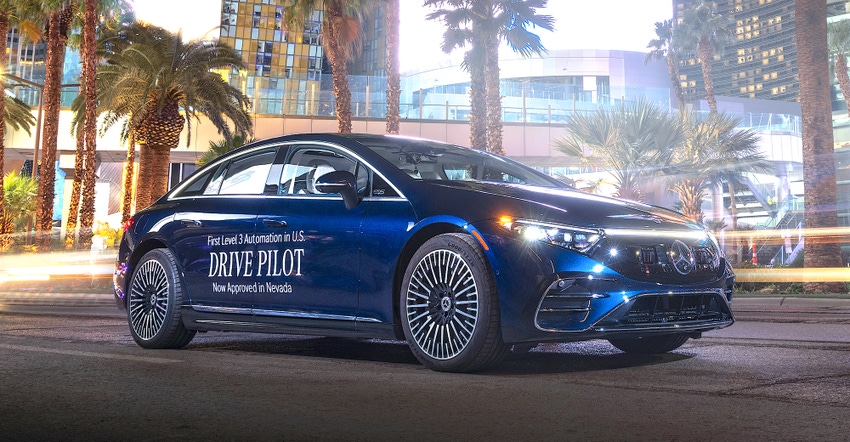Approval in Nevada brings the Mercedes-Benz SAE Level 3 driver assistance system to U.S. roads for the first time.

Only slightly behind the company’s end-of-2022 target, Mercedes-Benz has been granted regulatory approval for its Drive Pilot SAE Level 3 conditionally automated driver assistance system in Nevada. This marks the debut of a Level 3 system on U.S. roads.
As a conditional system, Drive Pilot can take over the steering, throttle, and braking, assuming responsibility for the car’s action from the driver on highways at speeds as high as 40 mph. It will available to customers on Mercedes’ flagship S-Class and EQS luxury sedans in the second half of 2023.
As I experienced during a test at Mercedes Immendingen proving grounds, Drive Pilot is activated by control buttons on the steering wheel rim, on the left and right above the thumb recesses. Under suitable conditions, the system indicates its’ availability on the control buttons. Once activated, Drive Pilot controls the speed and distance, guiding the vehicle within its lane. My drive demonstrated that the system reacts to unexpected traffic situations and handles them independently of the driver, through evasive maneuvers within the lane or by braking.
" It is a very proud moment for everyone to continue this leadership and celebrate this monumental achievement as the first automotive company to be certified for Level 3 conditionally automated driving in the U.S. market,” crowed Dimitris Psillakis, president and CEO of Mercedes-Benz USA after the approval.
Unlike Tesla’s less-capable and misleadingly branded Full Self Driving feature, Drive Pilot incorporates additional sensors that Mercedes-Benz says are indispensable for safe conditionally automated driving. These include lidar, a rear-view camera and microphones for detecting overtaking emergency vehicles, and a road wetness sensor in the wheel well. Furthermore, there are redundant steering and braking actuators and a redundant on-board electrical system, so that the system still works even if one of these systems fails so that a safe handover to the driver can be performed.
Drive Pilot’s default, in the event the driver cannot resume control when prompted is to brake the vehicle to a standstill in a controlled manner and engage the hazard warning lights. Once the vehicle has come to a standstill, it activates the Mercedes-Benz emergency call system and unlocks the doors to make the cabin accessible for first responders.
The Level 3 system first went into service in Germany in May 2022.
About the Author(s)
You May Also Like





